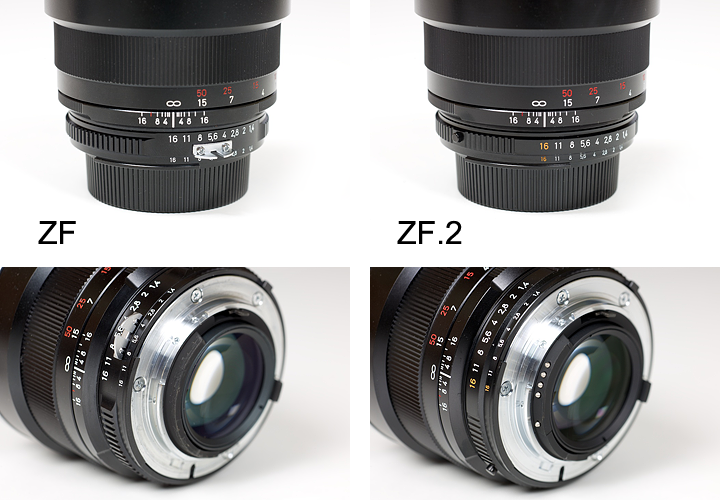|
Page 1 of 3

Review by Markus Stamm and Klaus Schroiff, published February 2011
Introduction
The Zeiss Distagon T* 28mm f/2 is a fast wide-angle lens. In terms of look and feel it is almost indistinguishable to its nearest cousins - the T* 35mm f/2 and T* 25mm f/2.8.
According to the Zeiss naming convention "Distagon" refers to a "retro-focus" lens based on an asymmetrical design. The asymmetry is necessary to provide the required space for a SLR mirror. The first Distagon lens was introduced in 1953 - a 60mm f/5.6 for the Hasselblad 1000F. The design evolved over time, of course, and it's no longer just used by Zeiss but across the whole industry.
The lens is available for Canon (ZE) and Nikon (ZF, ZF.2) cameras. There also was a K-mount version for Pentax cameras (ZK), however Zeiss decided to discontinue the ZK-line in 2010. In addition, the ZF-line remains available, but is now marketed for industrial applications only.

The build quality of the full-metal Zeiss lens (brass with chromium-plated brass front bayonet) is superb. The fluted focus ring feels exceptionally well damped. The supplied lens hood is made of metal as well. Unfortunately the high build quality is not inherited to the lens front cap which feels quite fragile and is a bit fiddly to handle. Even though there are two spring loaded grips, the cap is hard to pinch, difficult to apply and can come off too easily.

The front element does not rotate. However, the physical length changes (extends) when focusing towards close distances. The supplied metal hood doesn't seem to be overly effective due to its plain barrel shape. However, Zeiss Z lenses are relatively flare resistant.
The Distagon is a manual focus lens just like the rest of the gang. However, the focus indicator in the viewfinder remains active so there's a little guidance here at least.
ZF vs. ZF.2
The tested ZF version of this lens has no electronic coupling. Consequently, it offers full metering compatibility only with higher grade Nikon DSLRs that allow you to manually enter focal length and maximum aperture for non-CPU lenses. All current FX DSLRs (as of 2010) offer this feature.
The aperture needs to be set on the lens and can be set in half-stop increments. Technically, ZF lenses correspond to Nikkor Ai-S lenses.

The newer ZF.2 version of the lens features an integrated CPU, which makes it an equivalent of an Ai-P lens. This ensures metering compatibility with all current Nikon DSLRs. When locked at the smallest aperture (marked in orange colour), the aperture can be set on the camera with any current Nikon DSLR (just as with any AF lens that features an aperture ring). There's an unlock button on the lens to release the aperture ring and set the aperture on the lens instead. However, this will lead to an error with lower grade Nikon DSLRs. Only higher grade bodies feature a custom function that allows the aperture to be set this way.
The above image shows the differences between ZF and ZF.2 lenses (using the Planar T* 85/1.4 as an example).
| Specifications |
|---|
| Optical construction | 10 elements in 8 groups, floating elements |
| Number of aperture blades | 9 |
| min. focus distance | 0.24 m (max. magnification ratio 1:4.7) |
| Dimensions | 64 x 93 mm |
| Weight | 520 g |
| Filter size | 58 mm (non-rotating) |
| Hood | barrel shaped, metal, bayonet mount (supplied) |
| Other features | CPU and camera controlled aperture (ZF.2 version only) |
|